10 Habits of Successful Entrepreneurs (1 of 2)
Habits change into character.
Ovid
We are all creatures of habit. Some habits can ruin our lives while others can be beneficial to us. Whether we choose to nurture bad habits or good habits, it’s up to us.
Here are 10 habits to help you achieve success as an entrepreneur:

1. Think Big and be Confident
Think big, start small, scale fast
Yes, thinking big is a habit and for any habit to produce results you need to exercise it daily.
What does it mean?
It means not to be afraid of scaling up. To think big you need to erase your own limitations that suppress your way of thinking. It’s the difference between driving a car to the next town and driving a rocket to the next planet.
You may refrain yourself from thinking big because you feel intimidated. The cure for this type of intimidation is breaking your high purpose into small goals. If you believe you can achieve one small goal at a time, you will feel empowered to work towards achieving your purpose.
To think big you need to have self-confidence. Self-confidence is the trust or faith that you have in yourself and your abilities. Don’t confuse self-confidence with self-esteem. Self-esteem is the opinion you have of yourself. When you have self-confidence you have a positive yet realistic view of yourself and the situations in which you are involved. Confident people don’t typically fear challenges, they are able to stand up for what they believe and have the courage to admit their limitations.

2. Lead, Inspire and Empower
Once you empower people by learning how to motivate and inspire them, they will want to work with you to help you achieve your goals in everything you do.
Brian Tracy
No entrepreneur achieves success on his or her own. As an early-stage entrepreneur, you can do everything but only for a short period of time. You need a team.
Employers are the most important resource of any business. The moment you begin working with a team, you turn into a leader. And the purpose of leadership is to lead, inspire and empower. You lead by example, you inspire through vision and you empower your team by supporting their self-development.
When empowering people becomes one of your habits, may they be employers, family members, business partners or suppliers, you are actually empowering them to help you achieve your goals and higher purpose.

3. Be Self-aware
Self-awareness isn’t just betting on your strengths, but accepting your shortcomings.
Gary Vaynerchuk
Self-awareness is understanding your own self. It means having a really good understanding of your emotions, as well as your strengths, limitations, attitudes, values and motives.
Part of being self-aware is knowing what emotions or feelings drive your behaviours. The moment you realise what triggers your behaviours you begin to understand about others’ actions and behaviours.
You can become a better leader through self-awareness. Dr Tasha Eurich, an organizational psychologist and executive coach conducted a four-year large-scale scientific study of self-awareness. She found that self-awareness helps leaders improve their leadership skills. To become a better leader through self-awareness you need to do the following:
- Focus on building both internal and external self-awareness;
- Seek honest feedback from loving critics;
- Ask What instead of Why.
Discover more about Dr Eurich’s study here:
Become a better leader through self-awareness – 2018 study.

4. Place Me Time and Family Time on your work calendar
Until you value yourself, you will not value your time. Until you value your time, you will not do anything with it.
M. Scott Peck
Many entrepreneurs believe that in order to be successful they need to be willing to sacrifice their personal and family life. But that is not true. You can have your cake and eat it too. All you need to do is think of your family activities like any other business appointment and write them in your schedule.
It’s equally important to prioritise me time because it is beneficial for you and your business. Whether is running or meditating or going for a walk in a park, me time helps you avoid the onset of stress, mental fatigue, and insomnia. It also builds your self-esteem as you come to realize that you are important and deserve to have a little time to yourself.

5. Read with the purpose of Learning and Developing
I was raised by books. Books and then my parents.
Elon Musk
Bill Gates reads 50 books a year and Elon Musk used to read 10 hours a day when he was a kid.
Reading is the old-fashioned way to expand your knowledge. As an entrepreneur, you need to keep growing, developing leadership skills, finding inspiration and overall, keep yourself updated with the latest trends and information.
Read part 2: 10 Habits of Successful Entrepreneurs (2 of 2).
2018 MailChimp Statistics for Successful Email Marketing Campaigns
Email marketing is still the best tool to attract leads, convert them to customers and increase sales.
MailChimp is one of the leading email provider. MailChimp’s researchers are constantly analyzing data to help you make the most of your marketing campaigns.
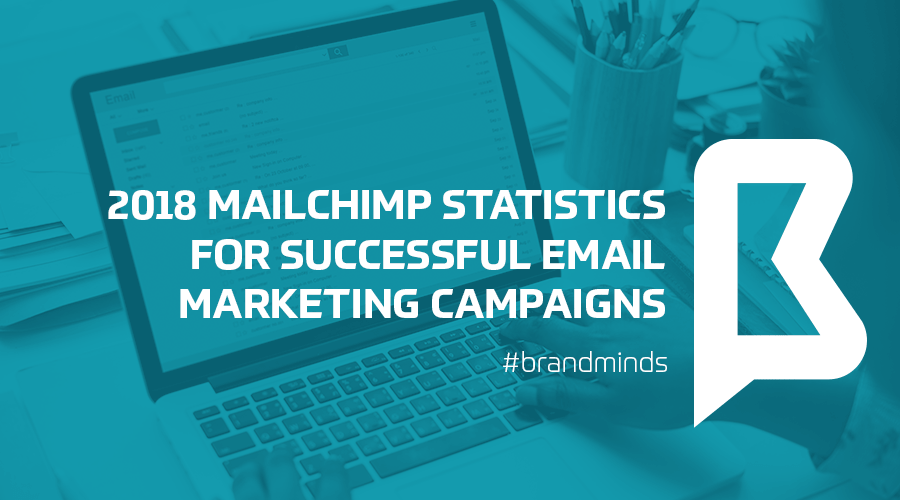
We put together a list of 2018 statistics we found in MailChimp reports.

You can use this knowledge to turn your email marketing campaigns into a successful tool:
1. Smartphone subscriptions and traffic per phone will have respective annual growth rates of 15% and 25% until 2020.
2. Mobile Use has a negative impact on Email Engagement: readers click less on mobile:
- PCs, tablets, and mobile devices accounted for 64%, 9%, and 27% of email addresses;
- PCs, tablets, and mobile devices accounted for 72%, 9%, and 18% of clicks;
- Recipients who use mobile phones had unique and total click rates of 2.7% and 3.9%, worse than all other device categories.
3. Responsive design can improve engagement
Campaigns that use responsive templates have higher click rates in general, but the impact seems to be mixed at the link-depth level.
Only the first 3-5 links typically see a benefit from the use of a responsive template.
4. Segmented campaigns perform better than non-segmented campaign
By narrowing your focus and sending messages to targeted groups within your lists, your recipients will find your campaigns more relevant—and relevant campaigns get better results.
Here are the results of email marketing campaigns using lists segmentation:
Opens: 14.31% higher than non-segmented campaigns;
Unique opens: 10.64% higher than non-segmented campaigns;
Clicks: 100.95% higher than non-segmented campaigns;
Bounces: 4.65% lower than non-segmented campaigns;
Abuse Reports: 3.90% lower than non-segmented campaigns;
Unsubscribes: 9.37% lower than non-segmented campaigns.
There are many types of list segmentation and MailChimp has looked into it.
Segmentation by merge field (“customer_type,” “ZIP code,” or “job_title,” for example):
Opens: 14.06% higher than non-segmented campaigns;
Unique Opens: 9.15% higher than non-segmented campaigns;
Clicks: 54.79% higher than non-segmented campaigns;
Bounces: 0.79% higher than non-segmented campaigns;
Abuse Reports: 3.33% lower than non-segmented campaigns;
Unsubscribes: 7.19% lower than non-segmented campaigns.
Segmentation by Date Added/Signup Date:
Opens: 29.56% higher than non-segmented campaigns;
Unique Opens: 26.86% higher than non-segmented campaigns;
Clicks: 51.64% higher than non-segmented campaigns;
Bounces: 55.18% higher than non-segmented campaigns;
Abuse Reports: 29.55% higher than non-segmented campaigns;
Unsubscribes: 33.76% higher than non-segmented campaigns.
Segmentation by Interest Groups:
Opens: 9.92% higher than non-segmented campaigns;
Unique Opens: 5.54% higher than non-segmented campaigns;
Clicks: 74.53% higher than non-segmented campaigns;
Bounces: 17.61% lower than non-segmented campaigns;
Abuse Reports: 17.78% lower than non-segmented campaigns;
Unsubscribes: 25.65% lower than non-segmented campaigns.
Segmentation by Subscriber Activity:
Opens: 10.44% higher than unsegmented campaigns;
Unique Opens: 12.23% higher than unsegmented campaigns;
Clicks: 15.69% higher than unsegmented campaigns;
Bounces: 9.23% lower than unsegmented campaigns;
Abuse Reports: 10.34% higher than unsegmented campaigns;
Unsubscribes: 5.49% higher than unsegmented campaigns.
5. Subject Line Data: Choose Your Words Wisely
Personalization works

Personalization by industry
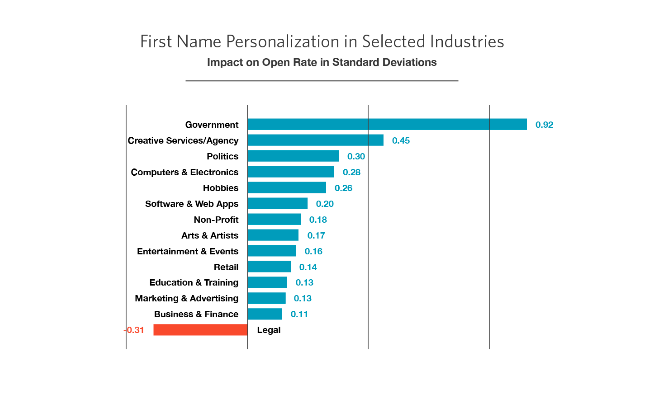
People respond to a sense of urgency or importance
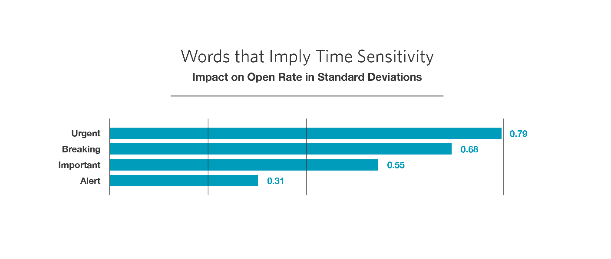
“Free” works but “Freebie” is better
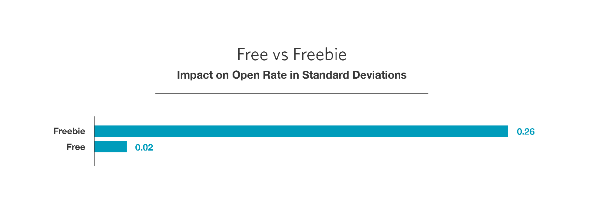
Announcements get opened
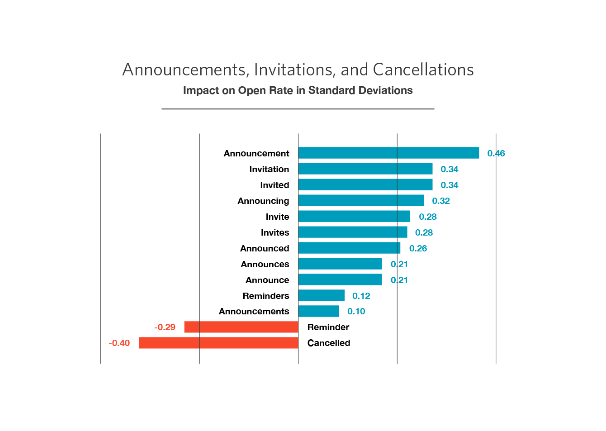
“Helping” instead of “Donate”
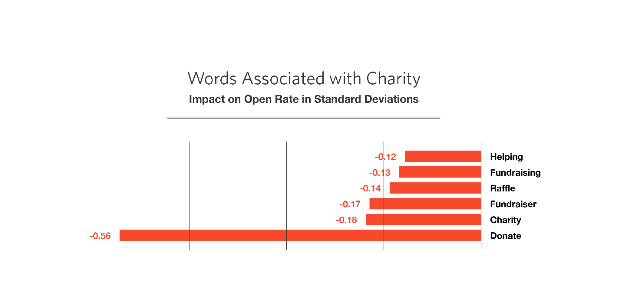
6. The average open rate for all industries is 20.81%
The most opened emails are related to hobbies, with an open rate of 27.35%;
Emails sent by government entities come in second, with a 26.52% open rate;
With a 26.03% open rate, emails about the arts and artists came in third.
7. The average click rate for all industries is 2.43%
Hobbies also have the highest click rate, which is 4.78%;
Media and publishing emails see the second highest click rate, at 4.55%;
Government comes in third, with a 3.65% click rate.
If you are interested in improving your email marketing campaigns, join us at Digitalium, The Hottest Digital Marketing Conference and learn from Kath Pay, Email Marketing Expert.
5 Business Growth Secrets from Successful Entrepreneurs
One of the questions that most entrepreneurs ask is What drives business growth?
To help you grow your business, we put together the following list:
5 business growth secrets from successful entrepreneurs
Business growth secret #1 – Continuous learning

Grant Cardone/wallstreetoasis.com
At 23 Grant Cardone was a car salesman struggling with a drug addiction. He was a poor salesman, making only $300 a month. After getting clean of his drug addiction, he decided to become the best salesman though he didn’t like selling cars. To achieve his goal, he went all in. He spent all of his free time studying every sales book, sales training tape or sales course there was on the market at that time. He studied all the sales masters to learn everything he could. Every book, every line, and every piece of information – he turned them around and made them his own. He lived and breathed sales.
Within three years he was in top 1% of everybody in the automobile industry. He became a sales master at 29 years old. He was teaching other people about sales while actively doing sales every day.
In his fifties Grant Cardone is the best sales training expert in the world. He owns multiple successful companies whose annual revenues exceed $100 million.
Grand Cardone will be speaking at Brand Minds 2019, the Central and Eastern European Business Summit of the Year, on May 10th, in Bucharest.
Key takeaway: Find your subject of interest and go deep.
Business growth secret #2 – Get used to failing
What do all successful entrepreneurs have in common? It’s not their IQ, it’s not their talent or having lots of money. It’s grit.
Grit is a personal quality defined as perseverance and passion for long-term goals. Grit entails working with great effort and determination toward challenges. Another feature of grit is the ability to maintain effort and interest over years despite failure, adversity and plateaus in progress.
When people experience disappointments or boredom in their entrepreneurial endeavours, most of them change direction or abandon altogether. Unlike them, the gritty individuals stay the course. Think Elon Musk, Steve Jobs and Jack Ma: faced with one failure after another, they didn’t surrender, they kept going for their dreams.
Find more about grit in our article This is the no 1 trait that predicts entrepreneurial success.
Key takeaway:
Reframe your failure and learn from it. All entrepreneurs make mistakes but only few are mentally strong to get back up and keep going.
Business growth secret #3 – Experiment
Have you heard of the 10,000-hour rule that states one needs to practise for 10,000 hours to become an expert? This rule of thumb holds true in domains such as games, music and sports, but it isn’t valid in business.
What helps businesses scale up is experimentation. This is Mark Zuckerberg’s strategy to grow Facebook: he replaced the 10,000-hour rule with the 10,000-experiment rule (source: entrepreneur.com)
The 10,000-experiment rule stems from science. At the core of any scientific development lies experimentation: develop a hypothesis, perform a test to prove the hypothesis right or wrong, analyse the results, and create a new hypothesis based on what you learned.
Giant tech companies have been developing fast and the driving force behind their achievements is the scientific method of experimentation. Learn more about the 10,000-experiment rule here.
Key takeaway:
Devise multiple small experiments and run them every day. Analyse the results, draw conclusions and apply them to your next experiment. This process will ensure constant improvement of your results and with each experiment you will get closer to achieving your goal.
Business growth secret #4 – Grow a positive company culture
In 1998 Nokia became the best-selling mobile phone brand in the world. By 2013 Nokia lost it all and was acquired by Microsoft. There were many reasons for Nokia’s demise but one reason stands out: Nokia people weakened Nokia people.
A 2015 research paper found that the giant manufacturer’s culture of status has made the company ill with organisational fear. The human factor was added to economic and structural factors and together they have generated a state of “temporal myopia” that hindered Nokia’s ability to innovate.
Employees stated that top managers and directors were no longer abiding by Nokia’s core values of Respect, Challenge, Achievement and Renewal (for more in-depth analysis read our article Why did Nokia fail?).
Microsoft learned from Nokia’s mistakes and changed its culture when Satya Nadella became the CEO of Microsoft in 2014.
Satya Nadella says his job as CEO is to create a culture that focuses on listening, learning, and harnessing individual passions and talents. At the core of Microsoft’s culture is employer empowerment.
Key takeaway:
Company culture starts at the top and grows at the bottom. Leaders must embody the company’s values and be role models for their employees.
Business growth secret #5 – Develop your network

Business networking is possibly one of the most important soft skills for entrepreneurs. It is the main activity that drives business growth.
Your main goal is to become a magnet, which attracts people and resources: money, ideas, opportunities, information etc. What does it take to become a magnet? Invest your time and energy to develop a strong network of contacts.
Do you need help to network correctly and efficiently? Read our article: 5 tips for successful business networking.
Key takeaway:
Remember that networking is not about selling. Business networking is about offering advice and helpful insights and building authentic relationships.
Expert’s opinion
Peter Barta, CEO of FPP and mentor at The Founder Institute is sharing with us his perspective on what it takes for an entrepreneur to be successful:
Starting a new venture is a very challenging process. Few of new initiatives end up being successful companies.
There is a saying Good ideas are a dime a dozen. What is the meaning of it? It means the value in any business is in implementation, and successful implementation is a mix of ingredients like vision, drive, confidence, flexibility, communication skills, multitasking, optimism. If you mix them together in the right way, it will lead to a successful company.
Running a business is like running a marathon with highs and lows, and what is coming can be exciting and scary in the same time. In order to maximise your chances you need to be clear on what your strengths and weaknesses are.
One of the things that strikes me when I talk to wannabe entrepreneurs is they can’t answer basic questions like:
What’s your reason for starting a business?
Most of the answers fall under these:
I want to be rich.
I don’t want to have a boss.
I had a fight with my former boss and so on.
All of these answers are not enough to drive your motivation in building a company. Sometimes I’m asking them if they are willing to run the extra mile in order to succeed, and the most obvious answer I get is What do you mean by that? I start to add:
Are you willing to learn?
How about failing?
How about experimenting?
What I found the most difficult are things related to experimentation and failing. Why? Culturally speaking we are not used to getting out of our comfort zone. We feel insecure and that’s okay because we don’t know what is out there, what is expecting us. The same with failing.
Unfortunately fear of failing is embedded in our DNA. We tend to see this as something bad. What we can do instead is we can look at it as being a learning process, a simple experimentation that didn’t get us the results we wanted.
One ingredient that I was mentioning above is optimism. This means when things don’t go in a way you expected and you failed, you recognise that you are not a failure, but the strategy or product that you were working on were not right.
Marketing research done right
Either you start a new business, launch a new project / product / service or you just want to stay ahead of your competition, a strong and smart marketing research will give you the necessary advantage over the competition. Moreover, in this ever-changing and moving market, with the technology changing it day by day and with consumers always up-to- date and in control of the situation, research becomes more and more important daily. Therefore, market research is a key component of any good product team management process, sales and marketing strategy, or business growth strategy.
“Marketing research can give a business a picture of what kinds of new products and services may bring a profit. For products and services already available, marketing research can tell companies whether they are meeting their customers’ needs and expectations. By researching the answers to specific questions, small-business owners can learn whether they need to change their package design or tweak their delivery methods–and even whether they should consider offering additional services,” writes entrepreneur.com.
Research deserves its important place in a business activity and should be treated accordingly. We are presenting you some of the steps you must take in order to make sure your research is done right.

source: AdWeek
- Primary research focuses on gathering data from analyzing current sales and the effectiveness of current practices. It also takes competitors’ plans into account, giving you information about your competition. The pieces of information will be received following: interviews (qualitative and quantitative), surveys, questionnaires (online or by mail), focus groups.
2. Secondary research. Analyzing the data that has already been published. and that can help you identify competitors, establish benchmarks and identify target segments. Your segments are the people who fall into your targeted demographic–people who live a certain lifestyle, exhibit particular behavioral patterns or fall into a predetermined age group.
3. Study the Economy: Just like the history is important in knowing and understanding who we are as a culture and what we will be in the future, showing what we can expect, so is knowing and understanding the economy helping your business grow. You can better understand reports about some of the most important big factors affecting the industry you’re in and the customers you hope will spend their money on your products or services.
Being up-to-date with the economics world will help you know how to adjust your business, prevent difficult situations and choose the right time to expand.
4. Read Business and Industry Publications: Whatever your industry, there’s likely a trade group or research firm out there compiling industry statistics and trends that are all insights into your business. Join your industry trade group or follow key industry thought their leaders on social media and media (their TV, print, online appearances). Being part of the industry and its insights will help you find out detailed industry statistics and trends that can help you better understand the past, present and future of companies like yours.
5. Look Elsewhere: Take example from successful local and international businesses. A similar business on the opposite end of the country may give you some great promotional ideas, or an international market could start complaining about rising commodity prices before they affect you directly.
6. Hire a smart internal researcher and a good research agency. Your researcher will be able to present you monthly reports regarding the market and your consumers, while the agency will be a key element when making an important move on the market. They will for sure make the difference.
More ideas and steps you can find here.

